Do the Bundys Signal the End of the Great American West?
When public land is transferred to states, significant portions end up being sold off to private interests—and that means less wild nature for all Americans to enjoy.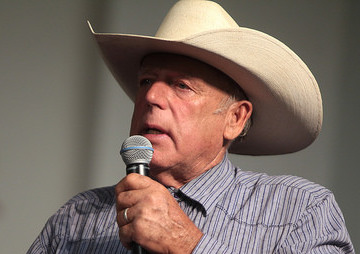 Nevada rancher and public lands scofflaw Cliven Bundy leads the contemporary attack on public land ownership. (Gage Skidmore / CC BY-SA 2.0)
1
2
3
Nevada rancher and public lands scofflaw Cliven Bundy leads the contemporary attack on public land ownership. (Gage Skidmore / CC BY-SA 2.0)
1
2
3
Straight thinking was not a requirement for admission to the occupiers’ cause. The fellow who photogenically rode his horse around the refuge while displaying a large American flag, for example, turned out to be acutely concerned lest the federal government divest itself of public lands. He feared the loss of access to cherished places where he liked to ride his horse. Because of that, he joined an armed effort aimed at forcing the government to do exactly what he didn’t want. Go figure.
Following the shooting death of LaVoy Finicum, the Malheur occupier who committed suicide-by-cop at a roadblock on January 26th, the occupation unraveled. At last count, the Bundy brothers and 24 others had been arrested and charged with a laundry list of crimes, including conspiracy to prevent federal employees from carrying out their duties and destruction of public property. All but one or two of them are still in jail.
Nor did the feds stop there. They finally nabbed Cliven Bundy at an airport after he attended a memorial service for Finicum, and also charged 18 others in connection with the 2014 Nevada standoff. Some of the 18 were already in custody for their involvement at Malheur. Bundy’s illegal cattle, which the government unsuccessfully tried to confiscate in 2014, remain at large.
More Mad Cowboy Disease in Utah
Despite the government’s thorough, if belated, crackdown, the hostility toward public lands on display at Malheur has hardly been contained. Such resentments are of a piece with the anger suffusing the presidential campaigns, although paradoxically enough Donald Trump has spoken out in favor of retaining federal lands. (Ted Cruz, by contrast, campaigned against Trump in Nevada by promising to “fight day and night to return full control of Nevada’s lands to its rightful owners, its citizens.”)
The darkest side of this “movement” is undoubtedly its well-documented association with armed militia groups and their persistent threat of violence. Gunmen from the Oath Keepers, for instance, obstructed federal officials from shutting down mines violating environmental regulations in both Oregon and Montana. According to the Southern Poverty Law Center, the current, rapid growth of militia groups is unprecedented and appears to have been spurred by the 2014 standoff at the Bundy ranch. Notices for “meet-ups” among “patriots” to show support for the incarcerated Bundys and the “martyred” Finicum are abundant on social media.
A similar virus has infected several western state legislatures, including those of Montana, Oregon, Wyoming, and Nevada. Representative Michele Fiore, who hovered at the fringes of the Malheur occupation, for instance, introduced a bill in the Nevada legislature to transfer federal lands there to state control, irrespective of federal wishes. Considered patently unconstitutional, it was quickly dismissed. A Nevada senate resolution calling on Washington D.C. to initiate action to transfer those lands received more serious consideration.
The game is being played more cagily in Utah. There, lawmakers approved legislation in March that authorized and partly funded the state’s attorney general to sue the federal government for title to approximately 30 million acres of Utah public lands. The suit would pursue strategies advanced via a study produced by a New Orleans law firm outlining “legitimate legal theories” that, it contended, might lead to the wholesale transfer of lands to the state.
The expected cost of the litigation has been estimated at $14 million and Utah has sought allies among other western states. So far, they’ve found no takers willing to join the suit, possibly because other attorneys general have concluded that the legal theories behind it are rubbish.
Utah has also exported its anti-federalism to Capitol Hill. One of its congressmen, Rob Bishop, currently chairs the House Natural Resources Committee and sympathetically held hearings in February on several bills, introduced by representatives from Alaska, Idaho, and Utah, that would place federal lands under state control. Lisa Murkowski, a Republican from Alaska and chair of the Energy and Natural Resources Committee, has promoted similar bills in the Senate.
Hanging on to “the Solace of Open Spaces”
Lost among the headlines, sound bites, and posturing is any serious discussion of America’s public lands and their purposes. Ammon Bundy was completely correct, early in the occupation of Malheur, when he said, “This refuge is rightfully owned by the people.” His problem was that his definition of “people” only included people like him. The Burns Paiute tribe, whose ancestral homeland includes Malheur and whose sacred sites are protected by federal law, certainly did not figure into his plans. The thousands of annual visitors to Malheur, who appreciate its 320 bird species and other wildlife, and the millions more who support the National Wildlife Refuge System, also seem not to be the “people” Bundy had in mind. The same might be said for anyone attracted to the idea of intact natural landscapes and functioning ecosystems.
The greatest vulnerability of America’s public lands is that the millions of their rightful owners scarcely know they exist. Ask the average New Yorker what the Bureau of Land Management is, and the odds are that you’ll get a confused stare. Even many people in the West, who live close to those public lands, have trouble differentiating the National Parks from the National Forests, though those two classes of land are administered for substantially different purposes by two different government departments, Interior and Agriculture. Yet most people agree that the wild open spaces of the nation’s grandest landscapes constitute a collective treasure.
Your support matters…Independent journalism is under threat and overshadowed by heavily funded mainstream media.
You can help level the playing field. Become a member.
Your tax-deductible contribution keeps us digging beneath the headlines to give you thought-provoking, investigative reporting and analysis that unearths what's really happening- without compromise.
Give today to support our courageous, independent journalists.
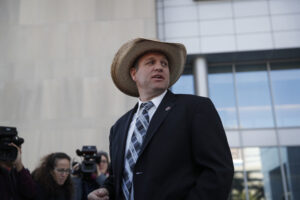
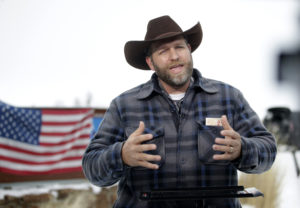
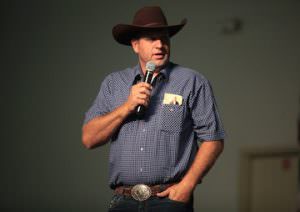
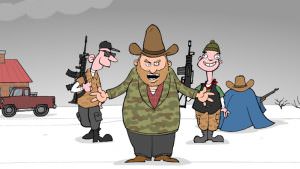
You need to be a supporter to comment.
There are currently no responses to this article.
Be the first to respond.